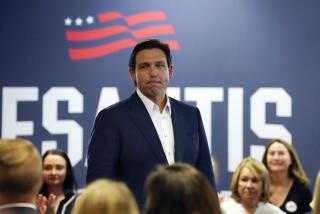Good Race Relations--as a Matter of Course
- Share via
Like many people, I’d like to dismiss the incidents of racial conflict that have occurred lately at various area schools as isolated events--but I know better.
Based on observations and conversations with students at my school and others, it is clear that such conflicts are on the rise at some local campuses.
There is, however, a lot the schools themselves--teachers, staff and students--can do to improve cross-cultural relations.
The National Conference of Christians and Jews has been conducting workshops with students and teachers at schools throughout the county for some years now, but more schools should adopt the program.
Workshop participants engage in exercises and games designed to make them question the stereotypes and other prejudices they practice, often unwittingly.
They are taught techniques they can use in teacher-student teams to spur discussion when they return to their schools.
For some students, the presentations are their first chance to talk openly about racism.
B’nai Brith, another national organization that focuses on squelching racism and prejudice, also offers help to schools.
The organization’s curriculum guide, “A World of Difference,” is easy to use in the classroom. It contains hundreds of assignments explaining various races, cultures and religions. First-person accounts of the pain of racism and prejudice help students develop empathy and tolerance.
The only drawback is that the guide costs about $60, but the materials can be shared among staff.
We’ve got a new program at my school I’d like others to try; it’s a variation on the tradition of mentoring.
In simple terms, African-American or Latino upperclassmen who have had trouble with drugs, gangs or the law are paired with freshmen of the same race who may be at risk of falling into similar problems.
In regular meetings, the mentors try to guide the younger students and steer them away from bad “life choices.” The emphasis on race relations is strong because all of the pairs meet in the same room, with very little structure, so they can mingle and help each other.
Since many of the mentors are leaders among their peer groups, it is hoped that they will encourage their friends to adopt a similar tolerance.
In general, one of the best ways for students to increase understanding and appreciation of each other is to talk. Through civil and orderly communication, they can dispel rumors and images of one another.
To encourage this, schools should create small forums that give all participants the opportunity to talk freely about racism. Groups should meet frequently and consist of students chosen randomly from all concerned groups. They should be supervised inconspicuously by adults and moderated by students trained in peer counseling.
A lot can be done in classrooms too.
Curriculums in all subjects can be improved to include the contributions of different cultures and ethnic groups.
For example, history courses can cover more of what has happened in other nations and cultures. Students in music, art, literature and science courses should learn what various ethnic groups have contributed to those fields. Even physical education teachers can help by using sports and games from other cultures.
In addition to the subject matter, the ways we teach can affect race relations too.
For example, using cooperative learning groups is beneficial for many reasons but is particularly good for kindling conversation and even friendship between students who would probably never interact.
With a few extra minutes of planning, a teacher of any subject can turn a classroom into a mini-United Nations by mingling students of different ethnic groups. Faced with a task that is worth a grade or big points, students have no choice but to form peaceful and cooperative connections.
Open discussions about racism should occur in every classroom at least occasionally. Some teachers may feel uncomfortable tackling this topic in class, but the alternative--seeing children beat up on each other--is far more uncomfortable.
Finally, adults at schools can help racial tolerance by modeling it for students.
At my school, for example, teachers and staff of all races mingle every day at lunch and at meetings. (I suspect this is true at any area campus.)
Unfortunately, we’re too often in the teachers’ lounge or faculty lunchroom when this occurs.
I’d like to see teachers and staff spend one lunch a week out in the students’ lunch area, where the students can observe our cross-cultural friendships.
Because it is commonly believed that children learn best through example, this may be the best way yet to get students to accept and cherish interracial tolerance.
More to Read
Sign up for Essential California
The most important California stories and recommendations in your inbox every morning.
You may occasionally receive promotional content from the Los Angeles Times.













